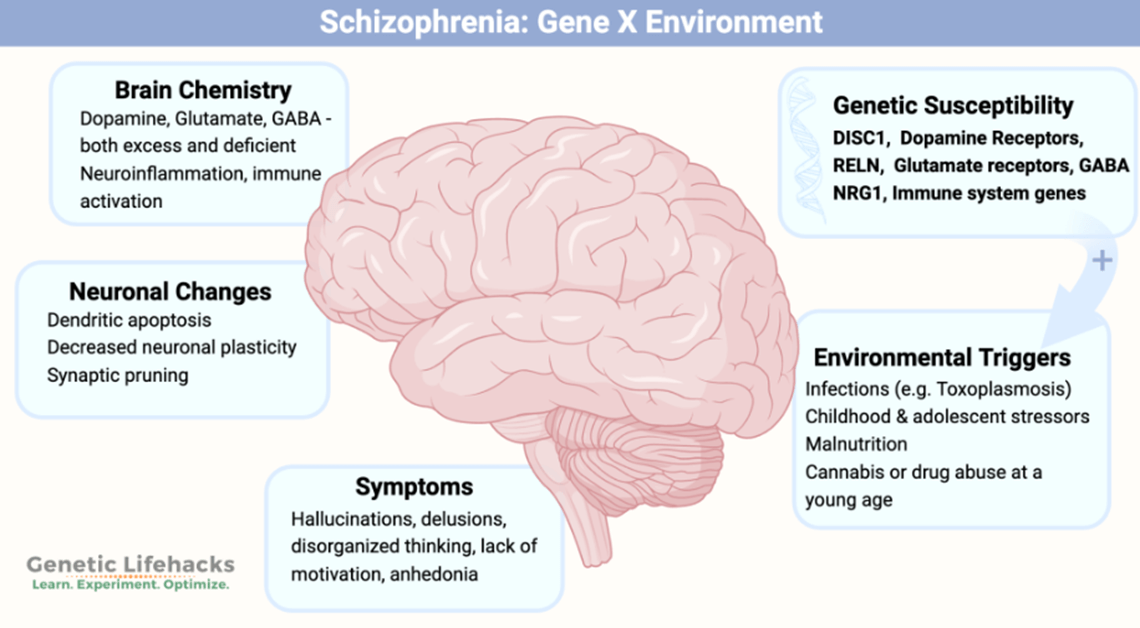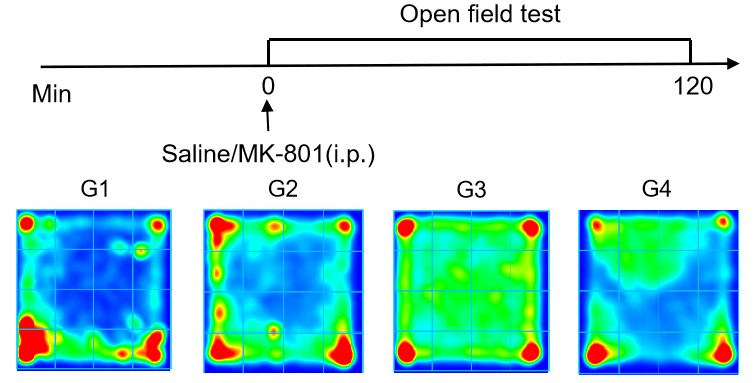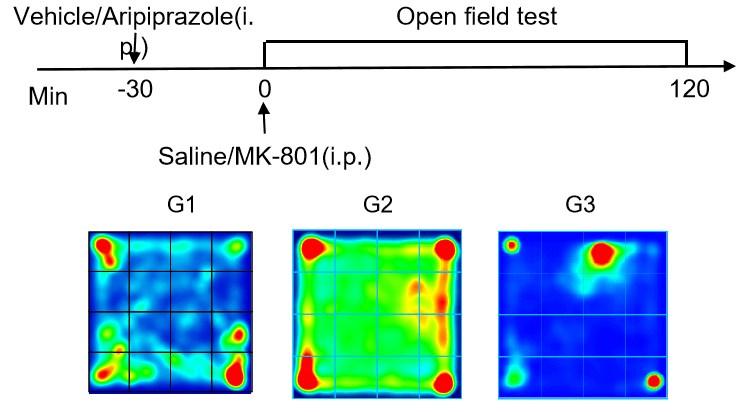Schizophrenia Mouse Model Introduction
Schizophrenia is a common and heterogeneous psychiatric disorder that severely affects the lives of roughly 1% of the population worldwide. It is characterized by the presence of positive psychotic symptoms (delusional thinking, hallucinations, and disorganized behavior), negative symptoms (lack of motivation, blunted affect, poverty of expression and social withdrawal) as well as enduring neurocognitive deficits (attention, processing speed, working and long-term memory, executive function, and social cognition).
Results
MK-801 induced schizophrenia in C57BL/6Jmice
MK-801 significantly increases the total distance in the open field test. A, Line graph showing that low, medium, and high doses of MK-801 increase the distance traveled over a 2-hour period. B, Bar graph demonstrating that total distance traveled in the open field is significantly higher in all MK-801 dose groups compared to the control group.
Aripiprazole significantly attenuates MK-801-induced hyperactivity. A, Line graph showing that MK-801 markedly increases locomotor activity over a 2-hour period, which is significantly reduced by Aripiprazole treatment. B, Bar graph demonstrating that total distance traveled in the open field is significantly elevated in the MK-801 group, while Aripiprazole treatment significantly reduces this effect.






